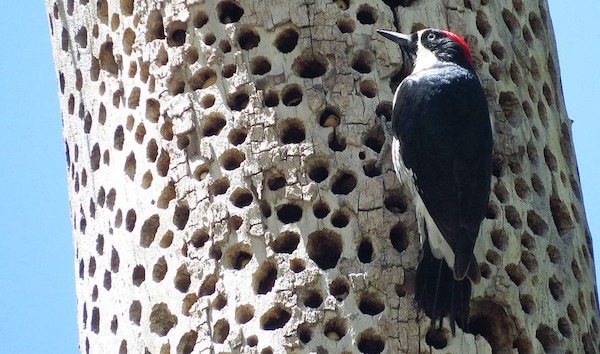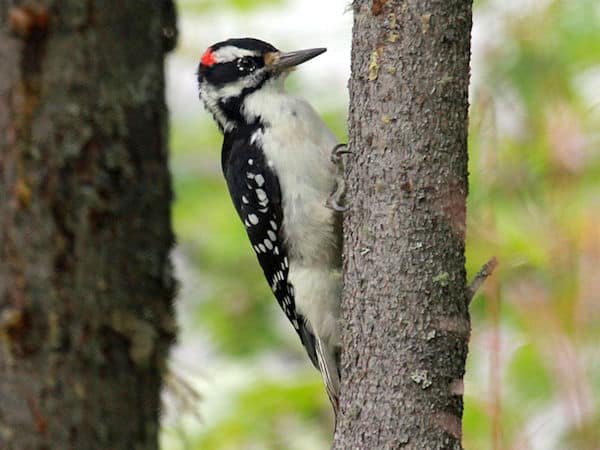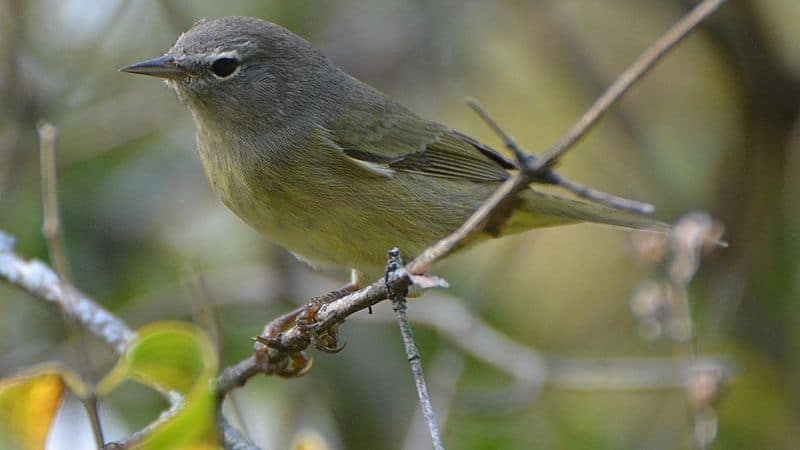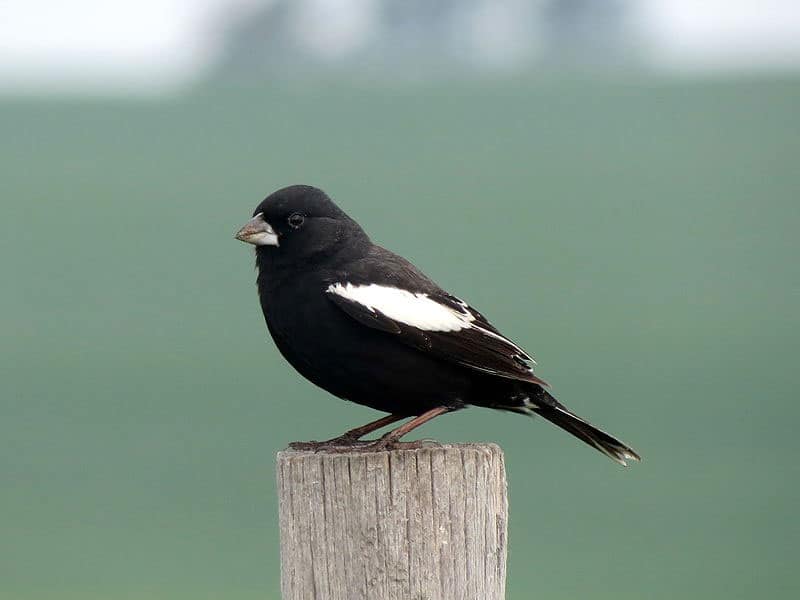Look for
Loud, active, and boldly marked, the acorn woodpecker is hard to miss. Both males and females are black-backed and have a facial pattern resembling clown makeup (black and yellow face, white eye, black bill, red head patch), but the male has a more extensive red crown. White rump and wing patches stand out in flight.
Listen For
The woodpecker is very vocal. The call is a raucous Wake-up! Wake-up! Wake-up! Also known for sputtering churrs.
Find It
As the name suggests, the acorn woodpecker usually associates with acorn-bearing oaks of several species. It lives in small, very social, and conspicuous colonies in mixed oak-pine woods, canyons, foothills, and in wooded residential areas.
Feeding Behavior
The acorn woodpecker rarely visits the ground or lower levels of the tree and mainly stays in the canopy. It will fly catch above the trees as well. Its diet includes flies, cockroaches, and ants as well as grass seeds, catkins, fruit, and flower nectar. Acorns are gathers from the trees singularly or they may be picked off a small twig in a bunch. The shell from the acorn is removed and then the acorn is eaten in pieces. The acorn woodpecker stores its food—mainly the acorns—in a granary tree. This woodpecker will also drill smaller holes in the tree used for sucking sap.
Nesting Behavior
Nests are made in excavated holes of trees. These nests can be 6 inches high and 8 inches deep. The acorn woodpecker doesn’t gather any nesting materials but just uses the wood chips and dust from excavating the hole. The clutch size is approximately five eggs that are plain white in color.
Wow!
One sycamore tree in California used by acorn woodpeckers as an acorn “granary” held an estimated 20,000 acorns! It did not even kill the tree!




